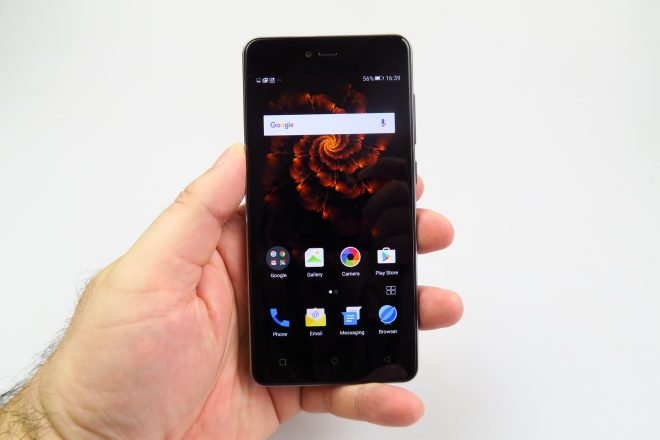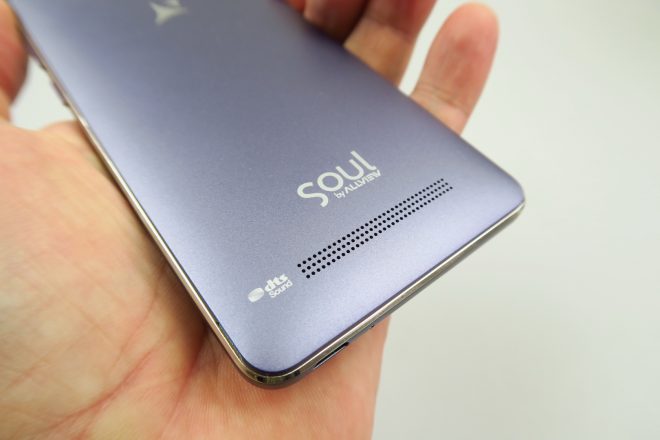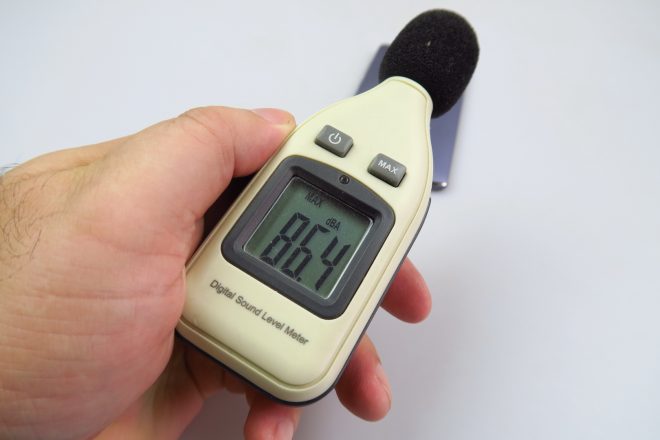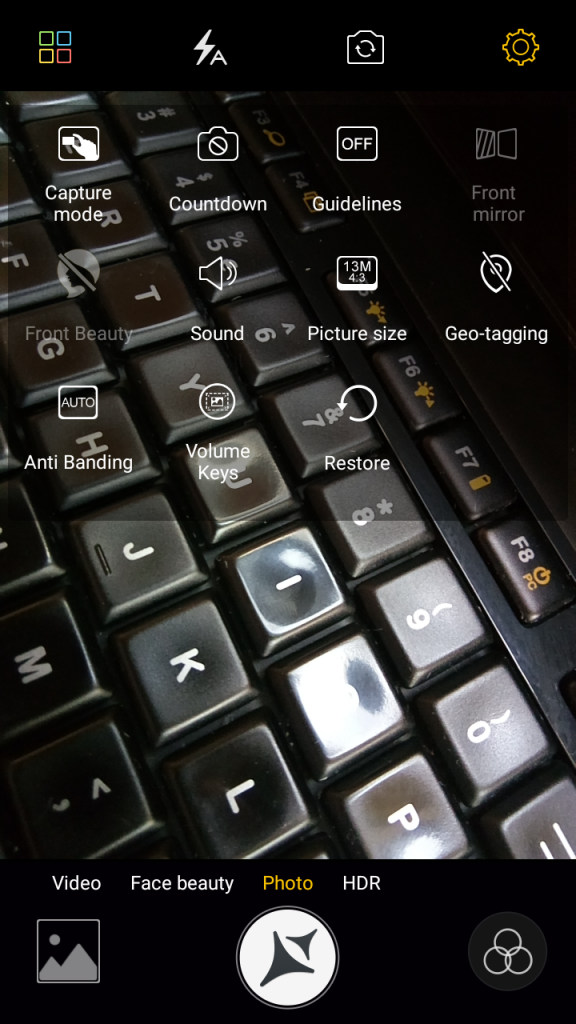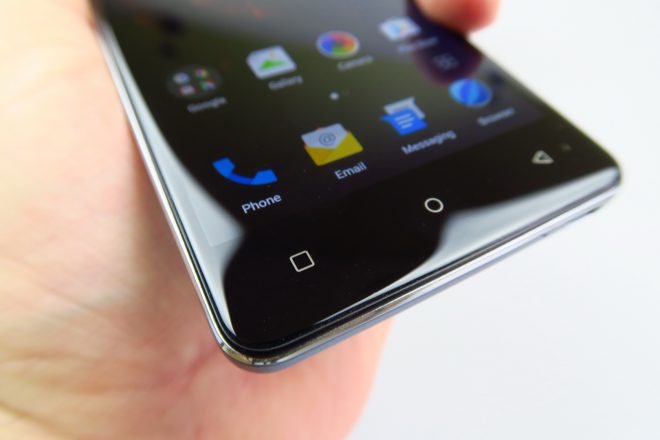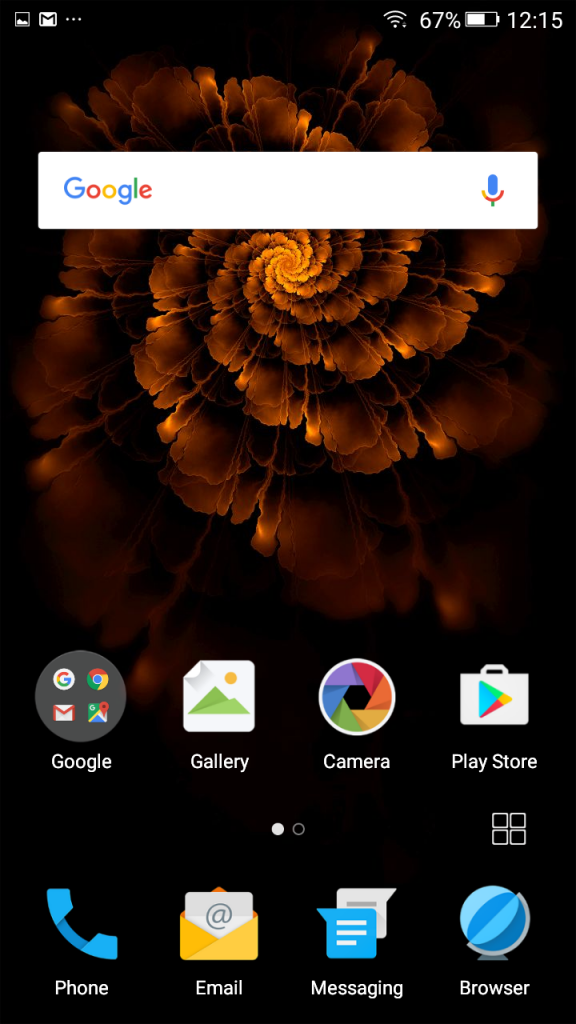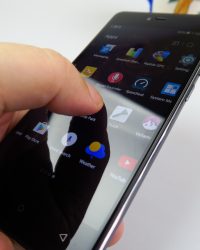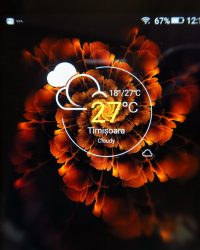Allview X3 Soul Lite is one of the phones we’ve tested this summer and in case that name doesn’t sound familiar, it’s a locally integrated version of the Gionee F103 Pro handset. That one was announced on June 27th and a day after we were already reviewing it. Priced at around $177, this device is a youthful handset and sort of an alternative to the X3 Soul Mini device.
It has a beautiful 2.5D panel and it comes in gold, gray and white. We have a test unit, without accessories, in case you’re wondering. Gionee F103 Pro packs a 5 inch display with a 2.5D panel that’s good looking. It also has a solid metal frame, it’s well built and comes with a removable back cover made of polycarbonate. The back is also slightly rounded and this device measures 8.5 mm in thickness, which is a bit more than the HTC One A9’s 7.3 mm for example.
It’s also 0.4 mm thicker than the Galaxy S5 for example. Allview X3 Soul Lite/ Gionee F103 Pro weighs 142.7 grams, which is pretty close to the HTC One A9’s 143 grams, by the way. It’s also 2.3 grams lighter than the Galaxy S5 for example. One hand usage is very easy and we’ve also got comfy buttons and good grip. There’s a shiny metal frame here and a matte back that imitates metal a bit.
The build is solid and the design is great overall, plus the ergonomics are quite good for the sub $200 price. Now let’s talk about the display. This one is a 5 inch IPS LCD panel with In Cell technology and a 1280 x 720 pixel resolution. It uses Dragontrail Glass and the video player on offer here features a Pop Up Play style feature.
The viewing experience brought on good brightness, a crisp image and OK colors. There’s no oversaturation, but the white feels a bit too white and contrast is rather poor, especially in strong sunlight. View angles are wide and when we put the luxmeter to work, we achieved 350 LUX units, which is OK and surpasses the Huawei P8 and the ASUS ZenFone 2.
It scores below the UMi Touch and Allview X3 Soul Mini though. Pixels are of the RGB Stripes variety and Settings include brightness, adaptive brightness, Economical Backlight, font style and size, plus we have the LCD Effect option (Neutral, Cool or Warm). Multitasking is done in native or card based system. It’s a good display overall, but too bad for the contrast.
We also analyzed the performance of the device and let’s see what the hardware holds. This Gionee unit has a quad core MediaTek MT6735 processor, with Cortex A53 cores clocked at 1.3 GHz. It’s a 64 bit 28 nm unit, with a Mali T720 GPU and 3 GB of RAM in the mix. 16 GB of storage and a microSD card slot are on offer as well. The phone behaves in a fluid manner, has no stutter and no lag. We ran games like Riptide GP2 without a problem and when it came to benchmarks, in Quadrant we were pretty much on par with the Huawei P8.
In AnTuTu 6 we reached the level of the Huawei G8, while in the 3D sub test we were in the area of the Galaxy A7 (2016). In 3DMark Ice Storm Unlimited we surpassed the Allview P8 Energy and we scored slightly below the Huawei Honor 4X. Performance is OK and temperature was a bit on the hot side, with 39.7 degrees achieved after running the benchmark GFXBench and 44.3 degrees after playing Riptide GP2 for 15 minutes, which means there’s overheating.
Time to discuss the battery, a 2400 mAh unit (Li-Po) and the charger is a 5V/1A one. On paper we get 220 hours of standby or 720 minutes of talk time. During our test, that involves HD video playback in a loop, we achieved 6 hours and 44 minutes, which is not very impressive. At least we beat the HTC One M9, but also scored below the Amazon Fire Phone and Xperia E4 for example.
In PCMark, a test that simulates continuous usage, we achieved 5 hours and 7 minutes, which not very impressive, but it somehow beats the Huawei P9. We scored below the Allview E2 Jump and Xiaomi Mi 4i, one an entry level unit and other a midranger.
Charging couldn’t exactly be tested, since we didn’t have he official charger, but an unofficial one needs 2 hours to juice up the phone. Settings include a Power Manager, with options like Normal, Power Save and Extreme Power Save.
The latter opts for a black/white interface and only the core features, like Phone, SMS and Clock. We also get Smart Power Saving at Night and Battery Optimization, which is basically Marshmallow’s Doze. I expected a bit more from this battery, especially since the device isn’t exactly slim. At least it’s replaceable…
Now let’s see and hear what the acoustics are all about. We get DTS technology here and a back speaker that looks rather generic. The music player is typical and comes with an EQ based on DTS options tailored for headphones. You can opt for usage modes like Dance, Jazz, Rock and User, with 5 custom channels and a Sleep Timer. The Custom mode includes Focus, Tru Bass, Space and Center DTS options.
Listening to tunes on the speaker was good, since the volume was pretty high, there was no distortion and the bass and guitar were quite nice. High notes were greatly rendered. There was also a bit of muffling on flat surfaces. The decibelmeter we usually use to measure the quality of speakers showed a value of 85.4 dBA at the front and 86.4 dBA at the back, both great results and surpassing the Galaxy S6 Edge+ and Galaxy S7 even.
Acoustics are good and we also get FM radio here. No headphones in this test version though… With the audio and video done and gone, it’s time to focus on the mechanism that lets us do the photo/video capture: the camera. There’s a 13 megapixel back shooter here, with Purecel technology and F/2.2 aperture, as well as PDAF and 4 lenses. The 5 MP front shooter has a flash screen feature, for better lighting of the face.
The camera app starts up with a medium level of speed and the zoom is quite fluid. I have to say that the focus was surprisingly fast and picture taking too. The UI is typical for an Allview model, with options on the left side like geotagging, grid, size (13 MP in 4:3 or 10 MP in 16:9). Then there’s the timer, sound and Modes, quite a few of them actually: Smart Scan, Super Photo (5 X 13 MP), Pic Note, Mood Photo, Panorama, Smart Scene, GIF, Night, Time Lapse, Macro, HDR, Panorama and Text Recognition.
The Pro mode stands out of the crowd with extra options like exposure, ISO, white balance and shutter speed, as well as focus. Effects are also available and the latest mode you just used is available at the top right side of the UI. Video is Full HD tops and there’s also an anti shake feature. The Face Beauty mode slims down your face and there’s also a big eyes option.
The gallery of shots we’ve taken during the day was done in July, on a day with mixed weather, clouds and sun. We managed to catch on camera some very good looking clouds and we did register some burnt HDR shots. The colors were well calibrated and we had a burnt selfie or two. However, images were generally very bright, but also a bit artificial-looking.
There was a bit of fuzz in the edges of objects in the distance, so details could be better. Once we zoomed in, the detail loss was quite clear. Panorama was rather low res, at 4624 x 1200 pixels and also a bit burnt. On the first level of zoom in things look OK, but zoom in a bit more and things seem pretty poor. There were some blurry shots in the mix and we registered some nice macros, courtesy of the special Macro mode.
There was a nice texture of those objects in the playground, but the tree leaves were not clear at all. We also had some great closeups in the shadow and it takes a bit of patience to get the right shot here, but it’s well worth it, we think. I’d put this camera’s quality on par with the Galaxy S4 and a bit below the Huawei Honor 5X.
For a price below $200 I’m happy with what we’re getting here. In low light conditions, the flash behaved admirably, clarity was OK and colors were quite good. There was some blur and fuzz here and there and especially in the distance things got a bit muddy, but nothing more than that. Closeups were pretty nice and we surpassed the Vernee Thor in these conditions.
Video capture happened in MP4 format, in Full HD, at 17 Mbps bitrate and 30 FPS. The day time vids were a bit shaky and constant exposure adjustments were annoying. Clarity and colors were reasonable and the microphone handled acoustics well. The sky was also well rendered. Zooming in resulted in some serious blur, so you can forget about filming in the distance.
We also had a few burnt frames and this feels more like the work of a good 8 MP camera, rather than a 2016 13 MP shooter, to be honest. My very own iPhone 5 clearly films better than that. Low light capture dropped bit rate to 10 Mbps and frame rate to 17 FPS. There was a bit of yellow in the images, some ghosting and things were rather foggy, so night filming is a big no no.
Overall, the camera can be qualified as “decent” or “reasonable”, always having the price in the back of our minds. Bright selfies are probably its best feature. Time to ditch the camera and see what the browser holds. It’s a standard stock browser, that’s slow and has poor benchmarks, sadly. The stock keyboard offers OK input.
On the connectivity front, you should know, that this is a dual SIM phone, with 4G LTE support of both the FDD and TDD king. You can get up to 150 Mbps in download speed and this model uses micro SIM card slots, while also providing HD Voice services. There’s HSDPA here, Bluetooth 4.0, WiFi 802.11 b/g/n, WiFi Direct and microUSB 2.0.
The dialer section offers access to features like Black List, Speed Dial and the calls were loud and clear, plus the signal was good. We did a Speedtest and achieved 95 Mbps in download via 4G and 46 Mbps in upload. WiFi gave us a speed of 62 Mbps in download and 25 Mbps in upload, which frankly speaking could be higher.
The OS here is Android 6.0 Marshmallow, with some customization. The lockscreen features inspirational messages and tapping on their links takes you to entertaining and sports sites. Multitasking is offered as a carousel, while a swipe down on the upper side of the screen shows notifications. A swipe up reveals 8 shortcuts, related to connectivity, brightness, screenshot and more, all of them editable.
The homescreen can be pinched to reveal widgets, effects and the likes. Swiping up on the homescreen reveals many extra options, like launcher, theme, desktop edit, wallpaper and more. A two finger swipe down activates a special Private Space, where you can store secret folders and documents, as well as private messages. Settings include a Do Not Disturb option, Guest Mode and Smart Gestures (Smart Vibrate, Smart Screen Brightness), Suspend Button and moving on to apps, there are 46 of them here, which means we get a bit of bloatware.
A new app offered on the device is Abroad Service, used to create trip plans over the holiday, as well as a memo and checklist. There’s also Bitdefender Mobile Security preinstalled, Chameleon and a Child Mode. Facebook and Notes round up the list. Time for the verdict!
Here are the Pros:
- very affordable
- good looking
- comfy
- OK display
- good performance
- replaceable battery
- nice acoustics
- reasonable pictures
- good connectivity
- Android Marshmallow on board
- road trip app
The Cons are as follows:
- poor screen contrast in the sun
- overheating
- bloatware
- battery could be better
- video capture doesn’t impress
This remains a youthful phone, with good looks, ideal for playing around with Facebook and Internet. It’s a bit future proof, thanks to the 3 GB of RAM and it’s ideal for posting on Facebook from the holiday, especially since the camera isn’t bad pictures-wise. And the design is another strong suit, particularly thanks to the 2.5D front panel and strong metal frame. The updated price is here.


